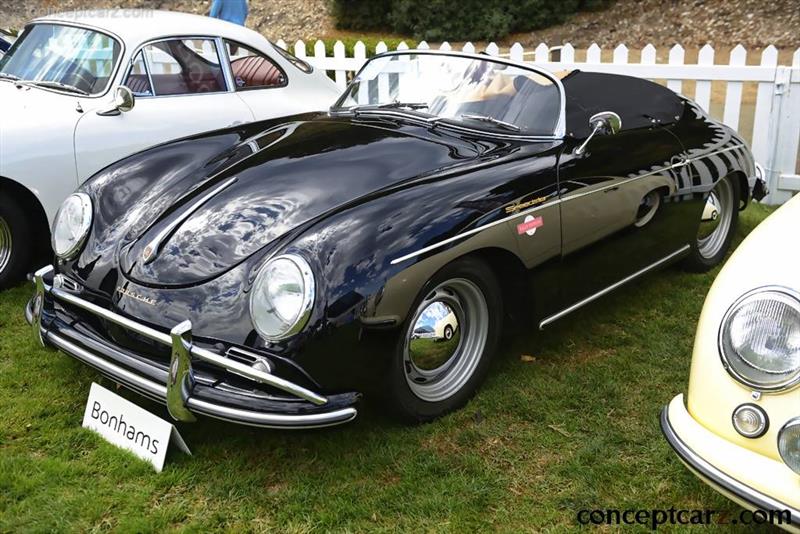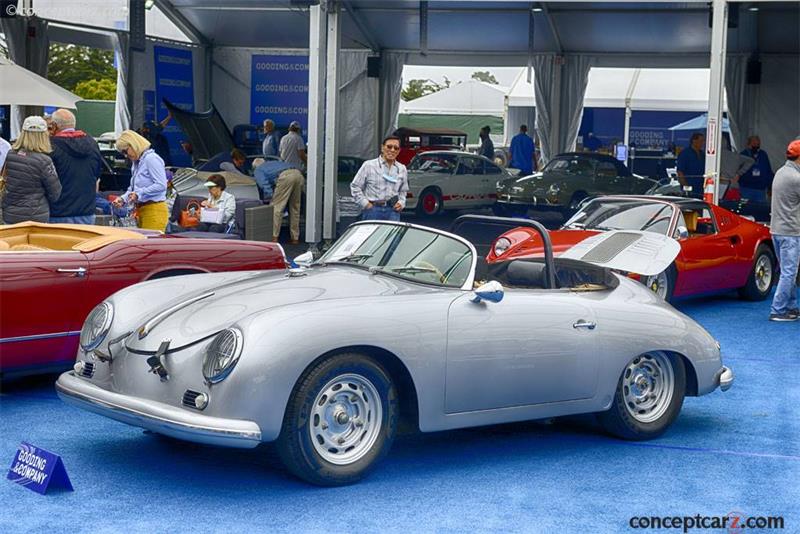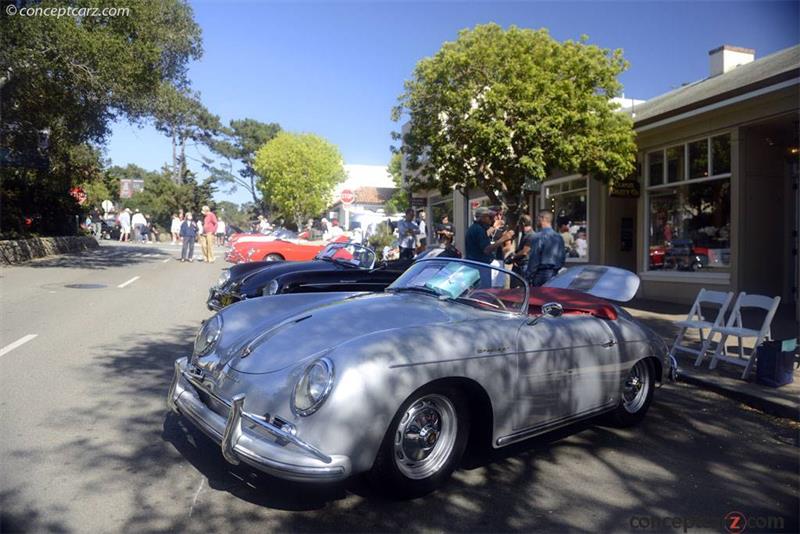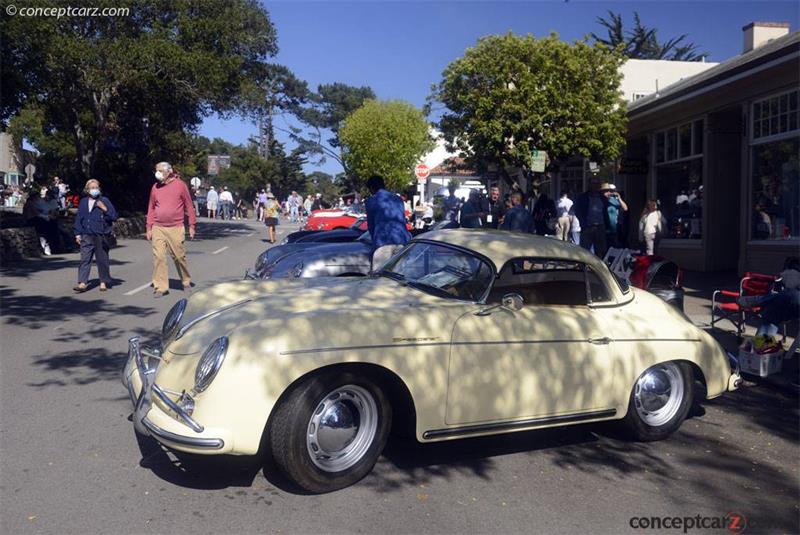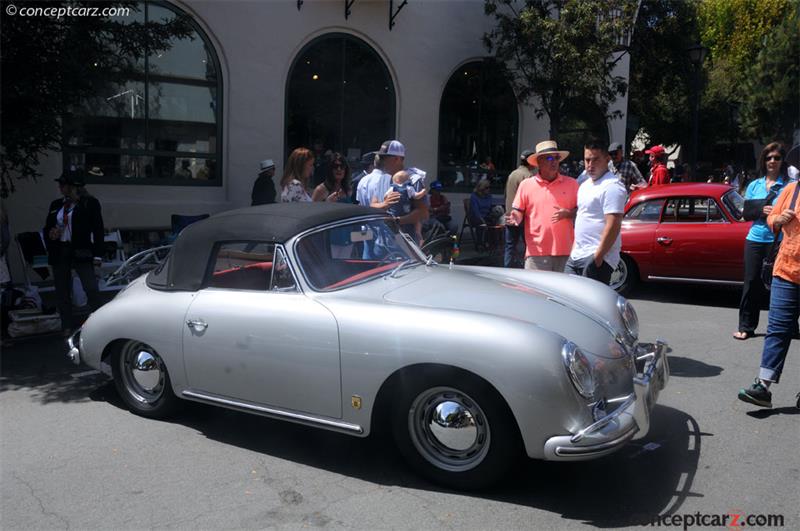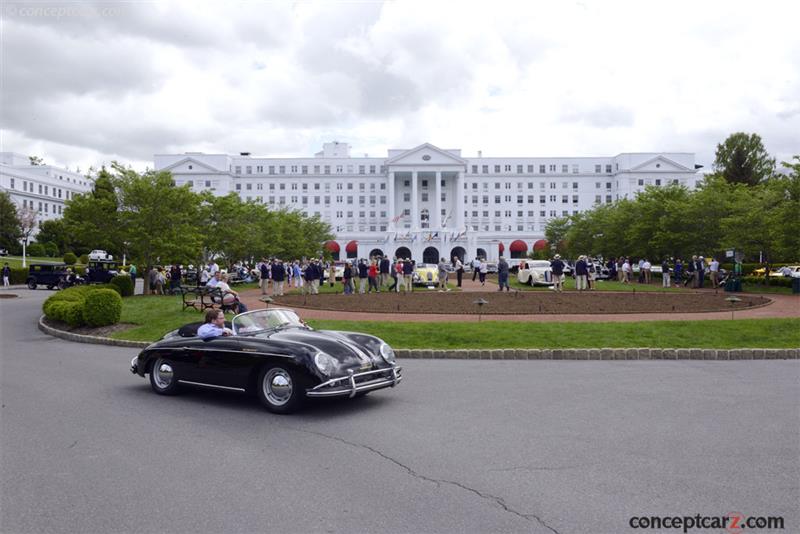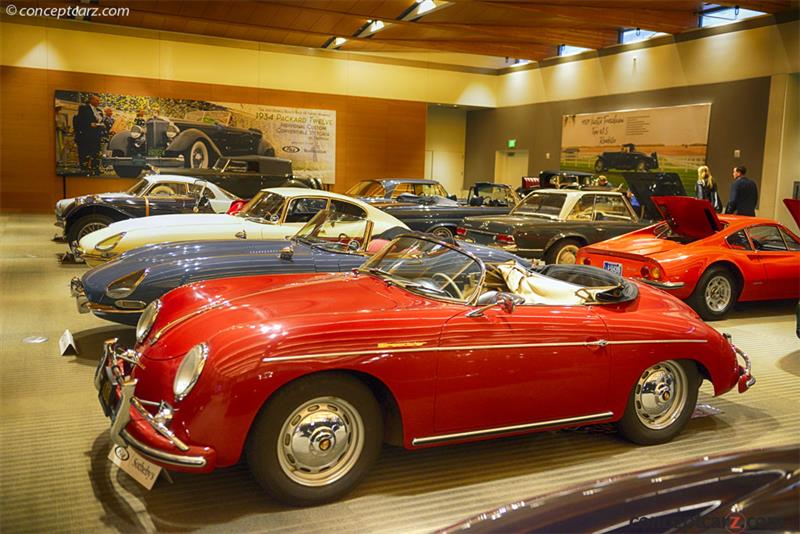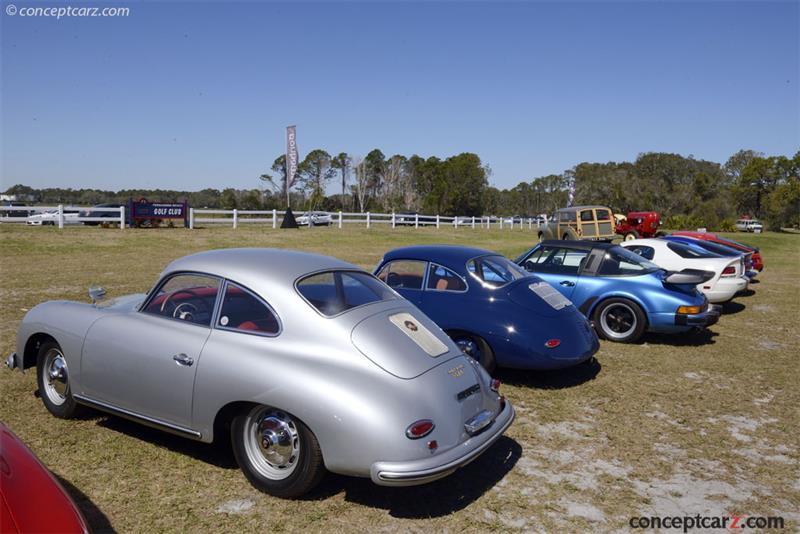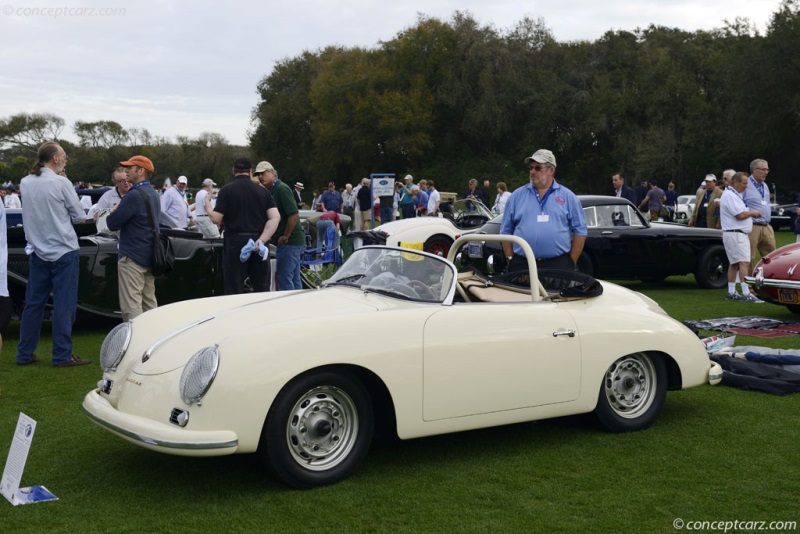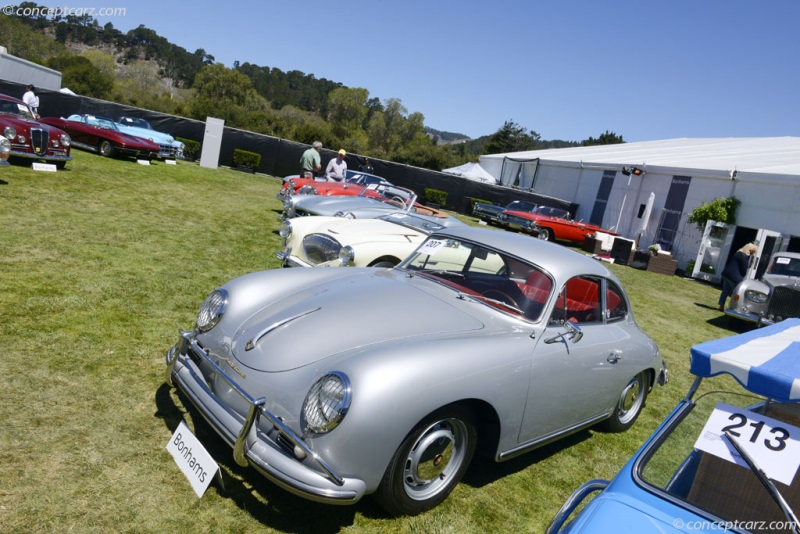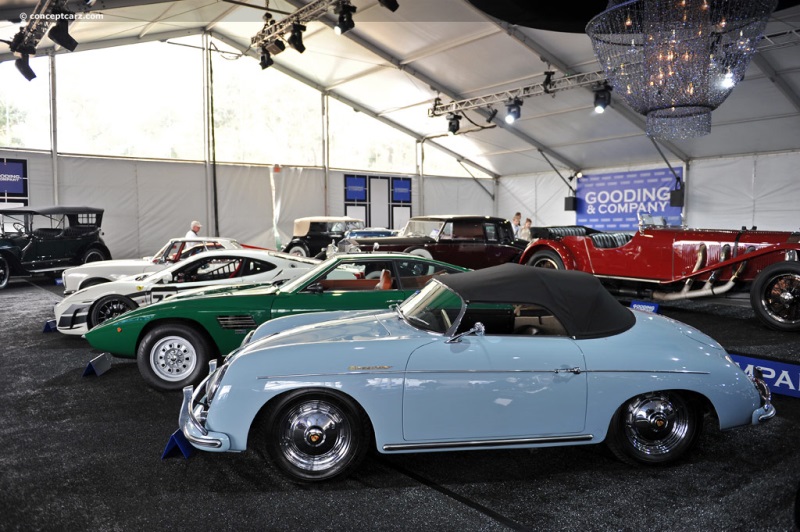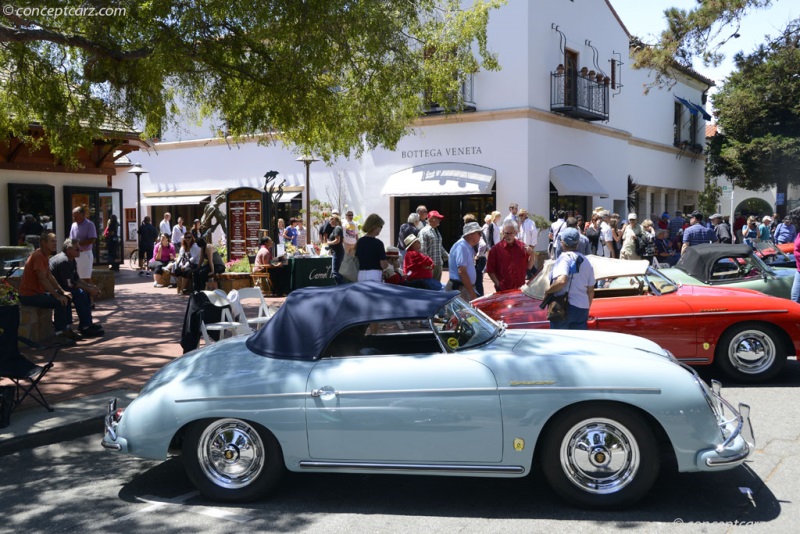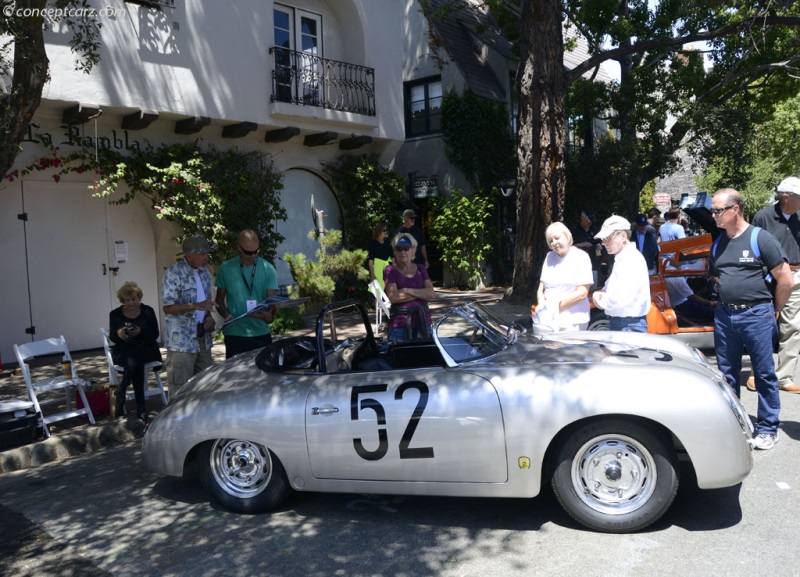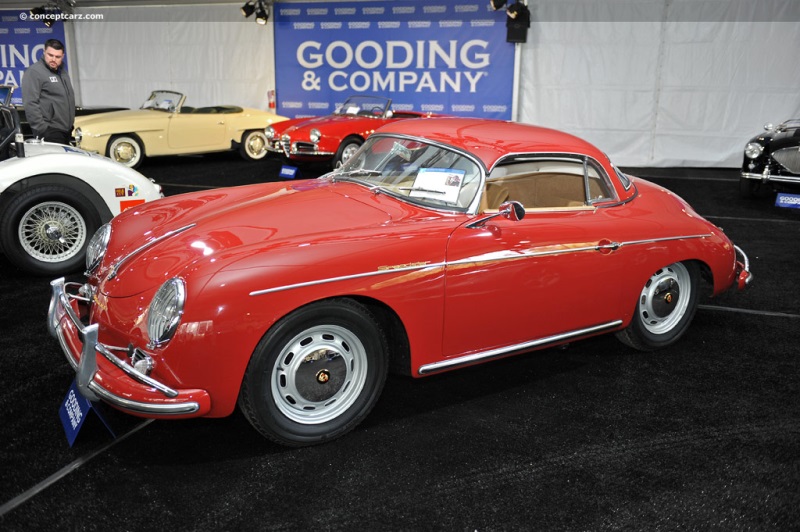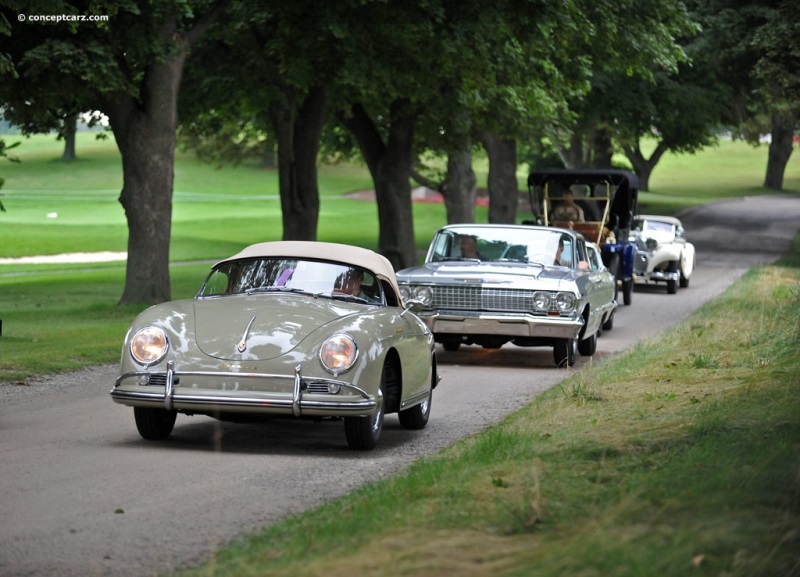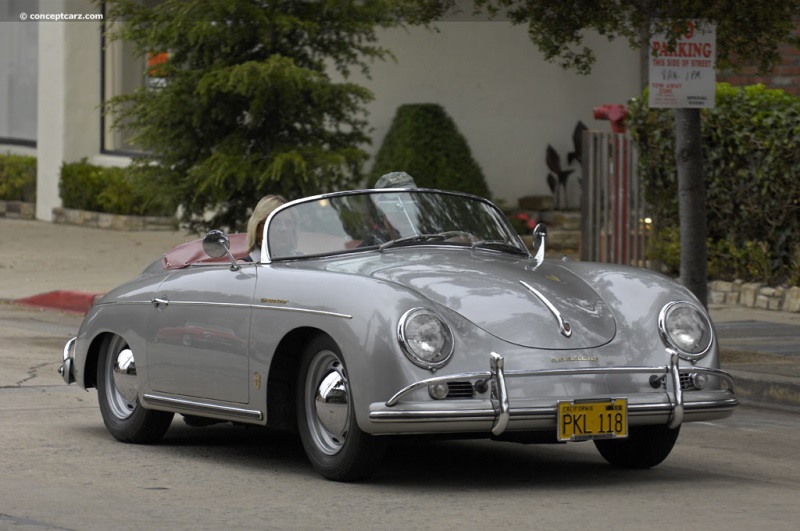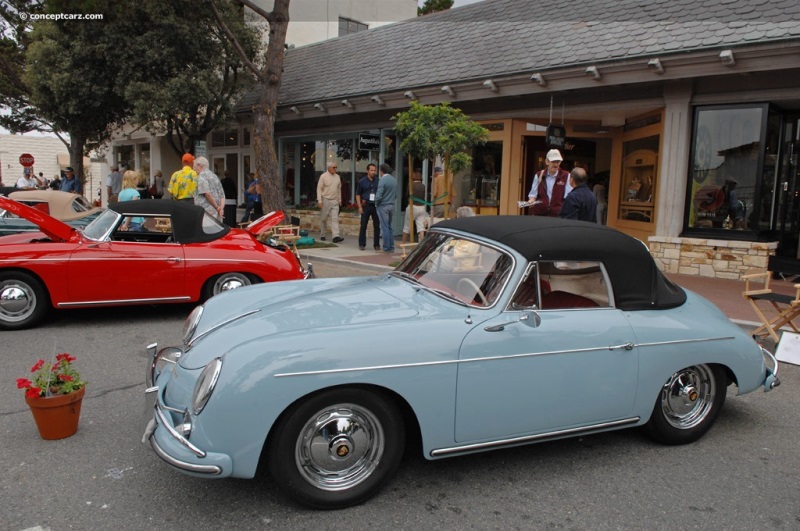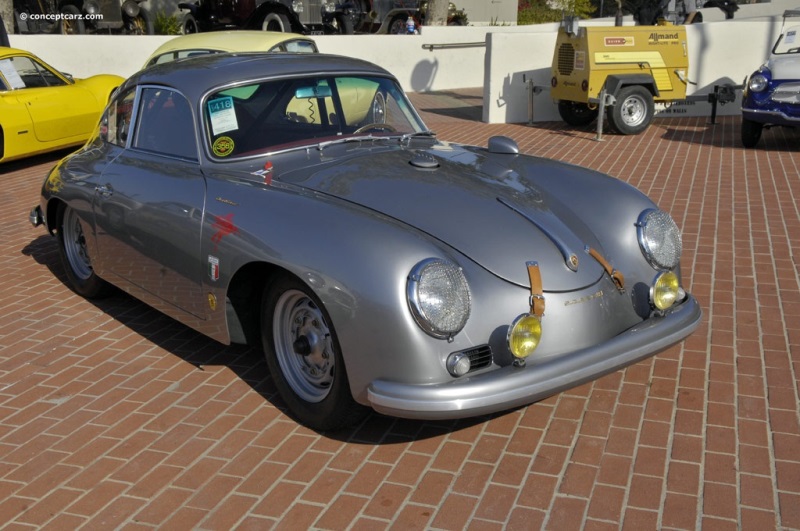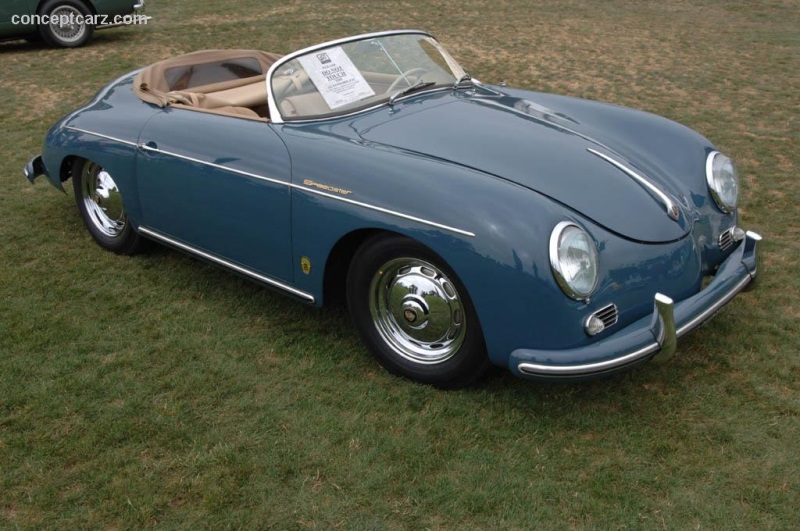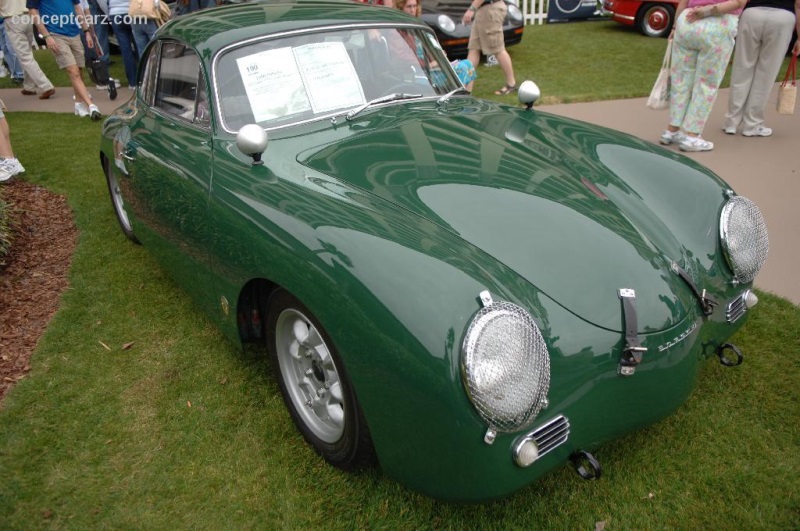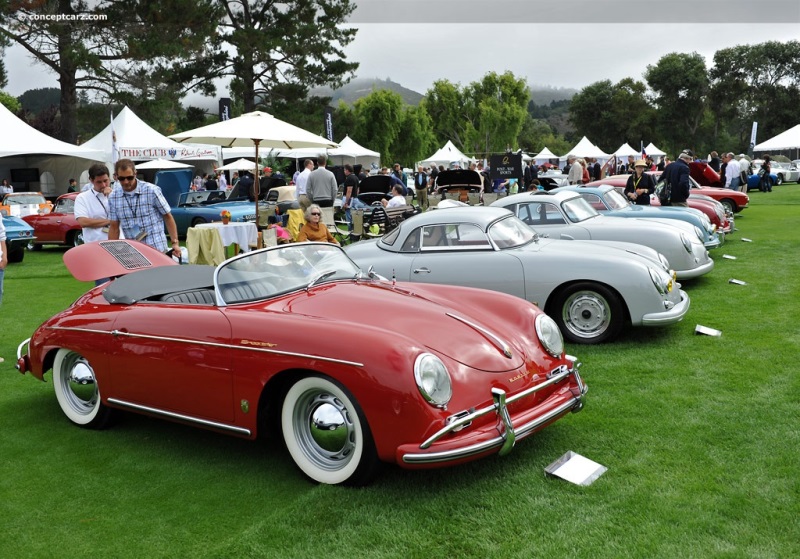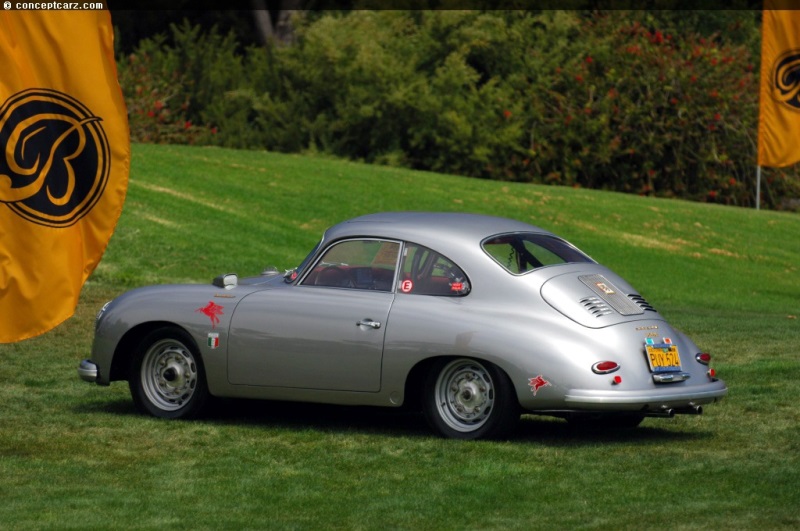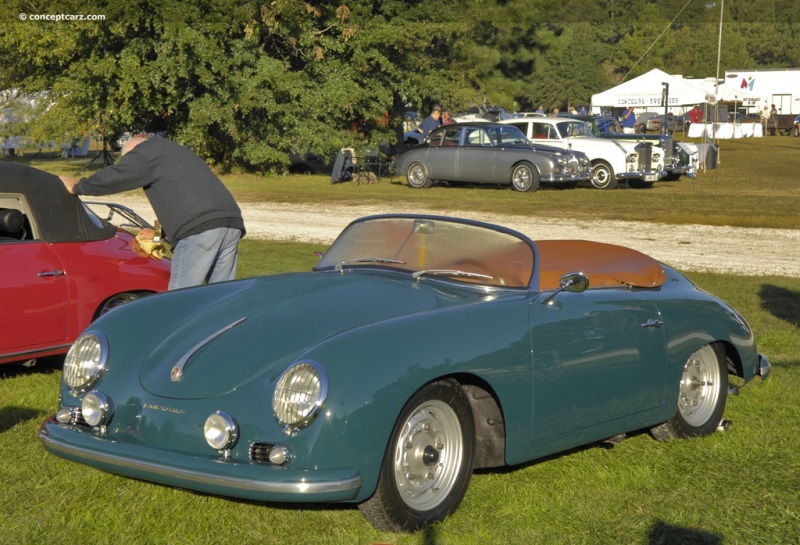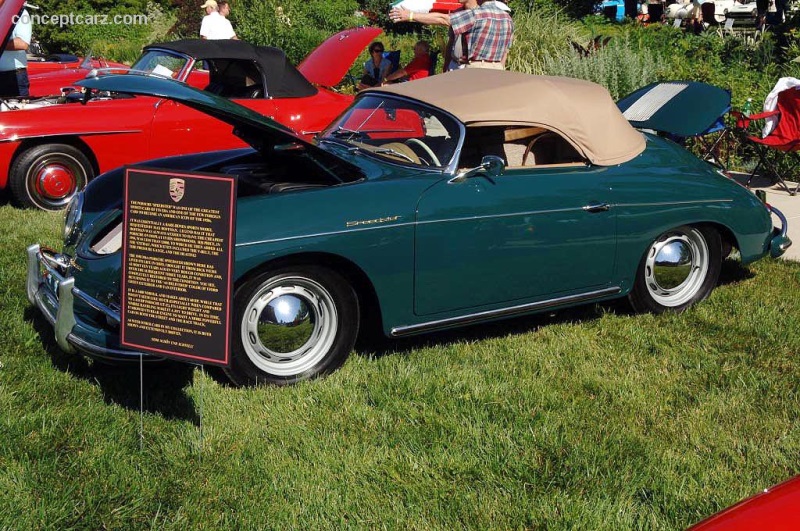The Porsche 356 production lasted seventeen years, beginning in 1948 and continuing through April of 1965, well after the 911 replacement model had made its debut in the autumn of 1964. During its production lifespan, the rear-engine, rear-wheel-drive, two-door was offered in both hardtop coupe and open configurations. Production began at Gmünd, Austria in 1948 and after approximately 50 examples been built, the factory relocated to Zuffenhausen, Germany in 1950. The short-run of aluminum-bodied 'Gmünd' examples were replaced by volume production of the steel-bodied 356 coupes in Stuttgart.
Cabriolet
Chassis #: 84590
View info and historyThe work of Ferry Porsche, the 356 was based on the Volkswagen designed by his father. Both the 'Beetle' and the 356 used a platform-type chassis with a rear-mounted air-cooled engine and torsion bar all-independent suspension. Development was constant, with the engine being enlarged to 1.3 and then to 1.5-liters. The original split windscreen was replaced by a one-piece windshield along with a Porsche synchromesh gearbox. Between 1948 and 1955, Porsche built 7,627 examples of the 356 prior to the introduction of the 356 A for 1955. A 'works' entry finished first in the 1,100cc class at the Le Mans 24 Hour Race in 1951, thus beginning the marque's long and illustrious association with La Sarthe.During the production lifespan of the 356, Porsche built 76,313 examples. 356 A
The 356A was produced from 1955 through 1959, bringing with it numerous incremental updates, the most visible being its curved windscreen and 15-inch wheels replacing the previous 16-inch units. The initial 1.1-liter engine eventually grew to 1.3- and 1.5-liters during the 1948-1955 production years, and most of the 356A versions were equipped with a 1,582cc version of the four-cylinder boxer engine with overhead valves, two valves per cylinder, dual downdraft Zenith carburetors, and delivering 59 horsepower at 4,500 RPM and a maximum torque of 81 lb-ft at 2,800 RPM.
Cabriolet
Chassis #: 84590
View info and historyThe internal factory designation of the 356A was the 'Type 1,' earning it the nickname the 'T1.' Approximately 1,200 examples of the early 356s in the U.S. had been badged as the 'Continental' and then an additional 156 from autumn 1955 to January of 156 as the 'T1' European' variant before reverting back to its numerical 356 designation. A second revision of the 356 A, known as the Type 2 or T2, was introduced in early 1957. Among the refinements introduced on the T2 included an improved transaxle and steering box design. Near the end of 1958, the Type 644 gearbox was replaced by a new Type 716 unit which was similar to its predecessor but with improved gear change linkage that allowed first gear to be engaged easier from rest. The exterior door handles of the T2 gained a slightly more rounded profile compared to the squarer profile of the Pre-A and T1 handles. The interior door handle was repositioned for easier access, moving forward and higher up near the upper front corner of the door. The door striker plate was also moved, now located farther down towards the center of the door. The T1 striker plates had 5 slot-head screws while the T2 plates had three cross-head screws. Another exterior distinguishable feature of the T2 was the exhaust system which exited through the rear bumper guards, except on the Carrera models. When the bumpers did not have bumper guards, the exhaust exited through a notch in the bumper. The total production of the Porsche 356A, built from 1955 through 1959, was 21,045 units. The 356B of 1959 through 1963 would eclipse 356B production, with 30,963 units built. The final iteration, the 356C, was built from 1963 until 1965 (and into 1966) with 16,678 examples constructed.356 Speedster
The Porsche Speedster was quick, nimble, had stellar handling characteristics, and fun to drive, offering both simplicity and affordability. The elemental and avant-garde Speedster captured the lucrative American sports-car market, with styling that was outwardly consistent throughout its production run, beginning in 1954 and ending in 1959.New York-based importer, Max Hoffman, advised the Porsche company that a more attractively priced, somewhat spartan open-top version may appeal to the American consumer. What followed was the Speedster, with a minimal folding top, twin bucket seats, lower door waistline, horizontal trim strip at the level of the door handles and wearing a low, raked windscreen which could be removed for racing. The side windows were discarded in favor of side curtains. A trial batch of 15 roadsters was constructed and its successful reception in the USA led to the introduction of the Speedster model in 1954. Based on the Glaser-bodied 356 America roadster and retaining its 'Type 540' designation, the Reutter-built Porsche 356 Speedster debuted in New York in 1954. The inspiration for the Speedster is also credited to John Von Neumann, Porsche's West Coast distributor, who had chopped down a Gmünd-built coupé in the late 1940s to create a lightweight competition car.
Initially, power was by the 1.5-liter engine, gaining the new 1.6-liter unit with the introduction of the improved 356A for 1955. The 1,582cc air-cooled, horizontally-opposed four-cylinder engine delivered 70 HP (SAE) and 60 HP (DIN) at 4,500 RPM and was backed by a four-speed fully-synchronized manual gearbox. Braking was handled by hydraulic drum brakes in front and back. The suspension was independent all around, with parallel trailing arms, transverse laminated torsion bars and anti-roll bar at the front, and swing axles with transverse torsion bars at the rear. The wheelbase measured 82.7-inches and used unibody construction. Priced at $2,995, the Speedster was the lightest of the 356s and capable of over 100 mph top speeds. The optional and rare Super tune increased output to 75 bhp
CabrioletThe total 356 Speedster production was approximately 3,676 (sources also report a total of 2,922) units, with a high of 1,171 units in 1957, followed by 552 examples in 1958. The early Speedsters were also known as Pre-A or T0 models and approximately 1,000 examples of the Pre-A Speedsters were built. Including the 200 prototype series (Pre-A) Speedsters constructed by the close of 1954, approximately 1,234 examples were Pre-A Speedsters. Approximately 1,850 examples of the T1 356A Speedsters were constructed. The Speedster was replaced in late 1958 by the 'Convertible D' model which had a taller, more practical windshield, a more comfortable interior and seats, and roll-up glass side windows. The 356 B 'roadster' replaced the 'D' model a year later, bringing with it an improved body, chassis, and braking system. The bodies had raised headlights, vent windows, and higher bumpers to better cope with urban parking. Stopping power was now by cast-aluminum Alfin brake drums with iron liners, and the standard 1582cc engine received updates that improved its reliability. The 'Super 90' option was named after the engine's 90 DIN (102 horsepower) rating. It used a counterweighted crankshaft, twin Solex P40-II carburetors, and sodium-filled valves, among numerous other detail changes including a unique oil pickup-up system that allowed the engine to rev another 800 RPM. The suspension system received Koni shocks in the front and rear, plus a camber compensator in the back. The sealing was improved to repel water, and new brake-cooling intakes were added to the nose, below the front bumper. Just like the Convertible D, the Roadster had roll-up windows, wraparound plastic rear window, a convertible top, and comfortable seats. Approximately 528 roadsters had the Super 90 option and built with Drauz bodies (one of Germany's larger body builders) in 1960. Porsche's preferred coachbuilder Reutter was struggling to keep pace with the ever-increasing demand, thus Porsche sub-contracted cabriolet body construction to a number of different coachbuilders including Drauz of Heilbronn (hence the 'D' suffix) until the restyled Porsche 356B arrived in September 1959, when convertible production transferred to d'Ieteren of Brussels. A total of 1,331 examples of the Convertible D were built between August 1958 and September 1959. Nearly all Speedsters had a left-hand-drive configuration, but a few received right-hand-drive for the UK, Australian, and South African markets. As the sports car market's fascination in open-top motoring declined, the drop-top 356 sales followed a similar path. The Convertible/Cabriolet models were part of the lineup since the early 1950s and at times generated similar sales to its closed body counterparts. 356A Carrera
Dr. Ernst Fuhrmann developed a racing engine while working for Porsche in the early 1950s, built around the air-cooled flat-four that had been successful for both Porsche and Volkswagen to date. This special engine featured a roller-bearing crankshaft with dual ignition and shaft-driven twin overhead camshafts in the cylinder head. The high-revving 1,498cc engine (Type 547/1) was placed in the first purpose-built racing car that Porsche had ever produced, the 550 Spyder. The Type 550 Spyders proved to be very competitive, placing third and fourth overall behind 4.5- and 4.9-liter V12 Ferraris in the 1954 Carrera Panamericana, earning the four-cam engine the name 'Carrera.' The Carrera engine soon found its way into the production 356s, less than a year after the 356 Speedster model had been introduced. The coupe body style was offered in either the full racing GT version and the luxury 'street' GS model. The difference between the Carrera and the pushrod engine was 'night and day.' While the pushrod unit quickly lost power around 4,000 RPM, the Carrera engine was just coming alive, and the revs continued to climb before a gear change was necessary.
Coupe
Chassis #: 103428
Engine #: 69468
View info and history
Auction entries : 1Initially, the option referred only to the engine's state of tune. Over time, the GS/GTs were equipped with other competition features such as an extended range 80-liter fuel tank and 60 mm racing front brakes with vented backing plates. The following year, the GS and GT Carreras became available with lightweight alloy panels, a louvered deck lid, vinyl trim, and Plexiglas windows. The 1,498cc air-cooled, horizontally-opposed, 'four-cam' four-cylinder Carrera engine developed 100 horsepower and was backed by a four-speed manual gearbox. An independent torsion bar suspension with shock absorbers and drum brakes was located at all four corners. Approximately 14 examples of the 1500cc Type 692/0 engine were built in 1958 and numbered 91001 through 91030. These were the last four-cams to utilize roller-bearing crankshaft, and the various type 692 engines are identified by their relocated distributor V-drive. With the help of two Solex 40 PJJ-4 carburetors, the 1,498cc Type 492/0 DOHC flat four-cylinder engine produced 110 horsepower at 6,400 RPM. 
Cabriolet
Chassis #: 856061The four-cam Carrera was a brilliant dual-purpose sports car and its success and popularity in racing prompted Porsche to continue its production through 1959, though the standard Speedster model had already been replaced by the more luxurious Convertible D. Porsche built 151 examples of the Carrera Speedster between 1955 and 1959, accounting for just three percent of total Speedster production. Of those, fewer than 90 Carrera Speedsters were specified in GS/GT trim and even fewer – approximately 56 in all – left the factory with lightweight aluminum panels.
by Daniel Vaughan | Mar 2021
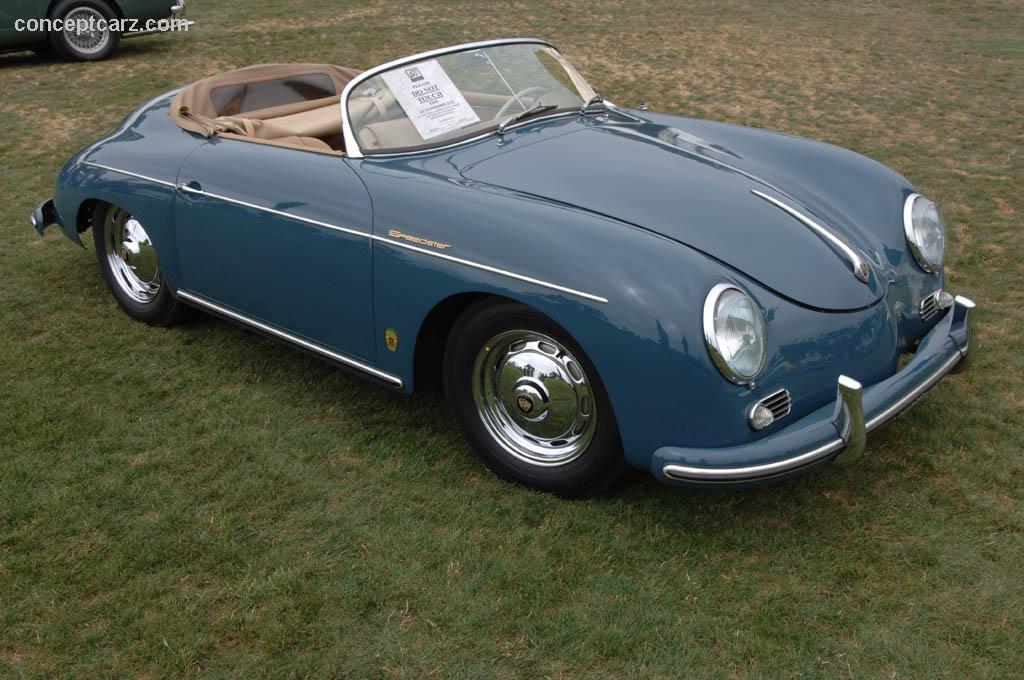
Cabriolet
Chassis #: 84590
View info and history
The 356A was produced from 1955 through 1959, bringing with it numerous incremental updates, the most visible being its curved windscreen and 15-inch wheels replacing the previous 16-inch units. The initial 1.1-liter engine eventually grew to 1.3- and 1.5-liters during the 1948-1955 production years, and most of the 356A versions were equipped with a 1,582cc version of the four-cylinder boxer engine with overhead valves, two valves per cylinder, dual downdraft Zenith carburetors, and delivering 59 horsepower at 4,500 RPM and a maximum torque of 81 lb-ft at 2,800 RPM.
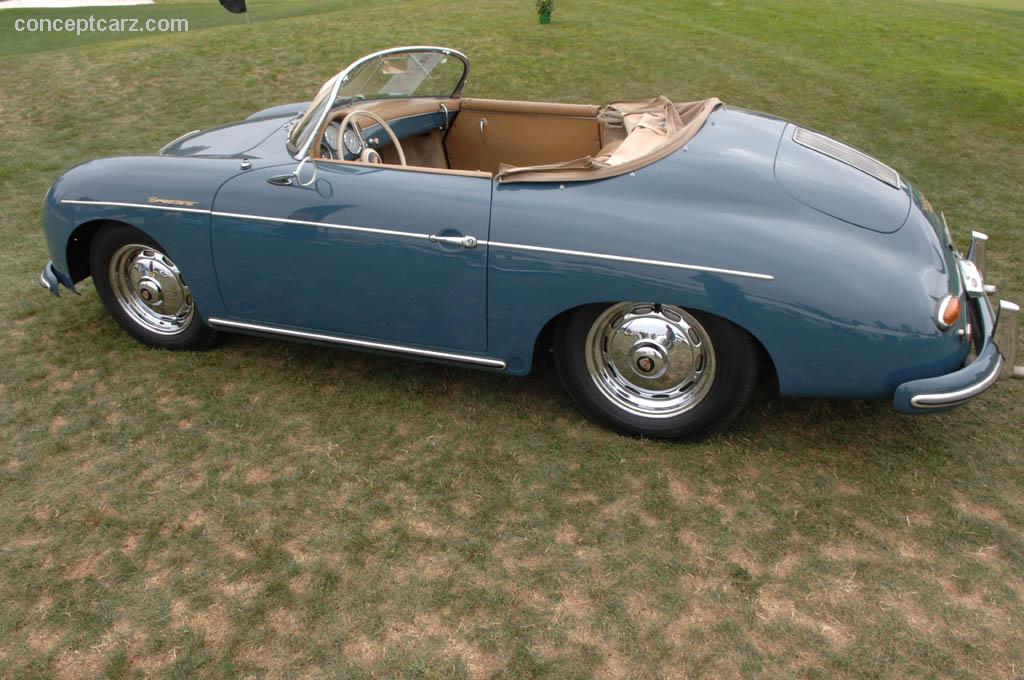
Cabriolet
Chassis #: 84590
View info and history
The Porsche Speedster was quick, nimble, had stellar handling characteristics, and fun to drive, offering both simplicity and affordability. The elemental and avant-garde Speedster captured the lucrative American sports-car market, with styling that was outwardly consistent throughout its production run, beginning in 1954 and ending in 1959.New York-based importer, Max Hoffman, advised the Porsche company that a more attractively priced, somewhat spartan open-top version may appeal to the American consumer. What followed was the Speedster, with a minimal folding top, twin bucket seats, lower door waistline, horizontal trim strip at the level of the door handles and wearing a low, raked windscreen which could be removed for racing. The side windows were discarded in favor of side curtains. A trial batch of 15 roadsters was constructed and its successful reception in the USA led to the introduction of the Speedster model in 1954. Based on the Glaser-bodied 356 America roadster and retaining its 'Type 540' designation, the Reutter-built Porsche 356 Speedster debuted in New York in 1954. The inspiration for the Speedster is also credited to John Von Neumann, Porsche's West Coast distributor, who had chopped down a Gmünd-built coupé in the late 1940s to create a lightweight competition car.
Initially, power was by the 1.5-liter engine, gaining the new 1.6-liter unit with the introduction of the improved 356A for 1955. The 1,582cc air-cooled, horizontally-opposed four-cylinder engine delivered 70 HP (SAE) and 60 HP (DIN) at 4,500 RPM and was backed by a four-speed fully-synchronized manual gearbox. Braking was handled by hydraulic drum brakes in front and back. The suspension was independent all around, with parallel trailing arms, transverse laminated torsion bars and anti-roll bar at the front, and swing axles with transverse torsion bars at the rear. The wheelbase measured 82.7-inches and used unibody construction. Priced at $2,995, the Speedster was the lightest of the 356s and capable of over 100 mph top speeds. The optional and rare Super tune increased output to 75 bhp
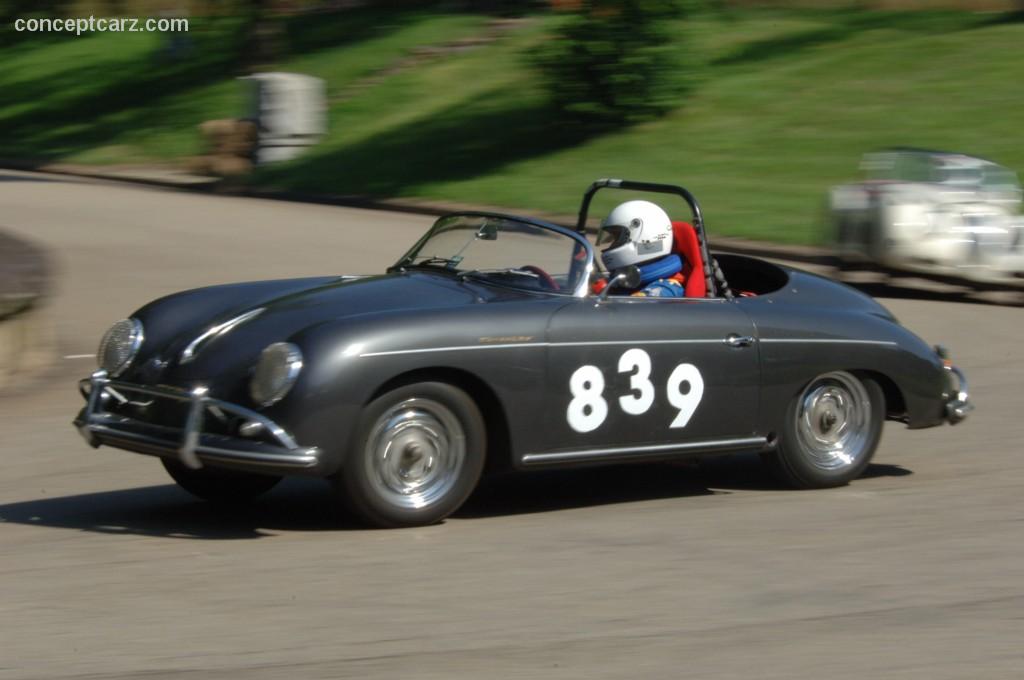
Cabriolet
Dr. Ernst Fuhrmann developed a racing engine while working for Porsche in the early 1950s, built around the air-cooled flat-four that had been successful for both Porsche and Volkswagen to date. This special engine featured a roller-bearing crankshaft with dual ignition and shaft-driven twin overhead camshafts in the cylinder head. The high-revving 1,498cc engine (Type 547/1) was placed in the first purpose-built racing car that Porsche had ever produced, the 550 Spyder. The Type 550 Spyders proved to be very competitive, placing third and fourth overall behind 4.5- and 4.9-liter V12 Ferraris in the 1954 Carrera Panamericana, earning the four-cam engine the name 'Carrera.' The Carrera engine soon found its way into the production 356s, less than a year after the 356 Speedster model had been introduced. The coupe body style was offered in either the full racing GT version and the luxury 'street' GS model. The difference between the Carrera and the pushrod engine was 'night and day.' While the pushrod unit quickly lost power around 4,000 RPM, the Carrera engine was just coming alive, and the revs continued to climb before a gear change was necessary.
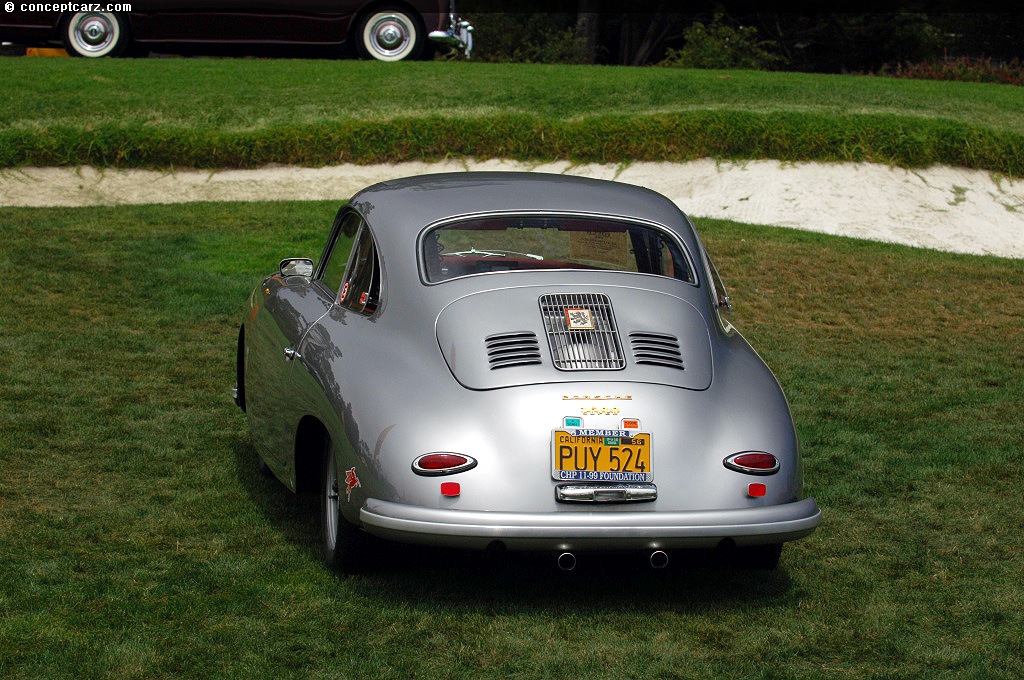
Coupe
Chassis #: 103428
Engine #: 69468
View info and history
Auction entries : 1
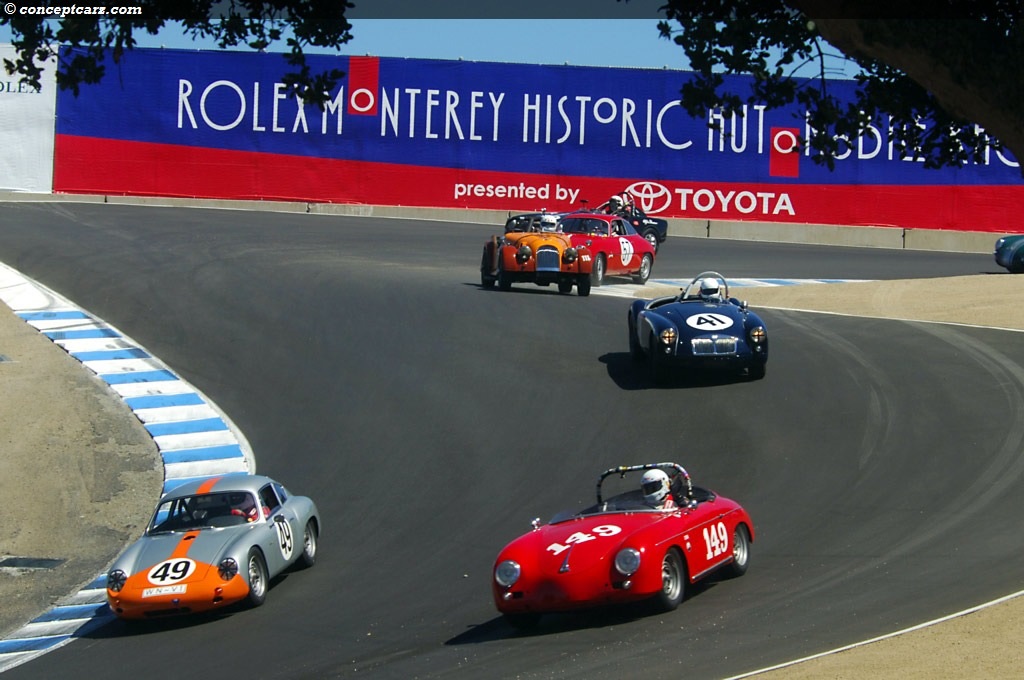
Cabriolet
Chassis #: 856061
by Daniel Vaughan | Mar 2021
Related Reading : Porsche 356 History
During the war, Ferdinand Ferry Porsche and a handful of his proven, faithful employees had started work on development number 356 in their workshops moved to the town of Gmünd in Karnten. The first design drawings were completed on 17 July 1947, and on 8 June 1948, the Karnten state government issued a special permit homologating the car. Returning home after being held by the French as a prisoner....
Continue Reading >>
Continue Reading >>
Related Reading : Porsche 356 History
The Porsche 365C has been named the number ten on the list of Top Sports Cars of the 1960s by Sports Car International in 2004. The Porsche 356 is still widely regarded as a collector car that has capably stood the test of time. There is some debate over which vehicle was the first official Porsche, the pre-war Porsche 64 being actually a VW racing automobile. The 356 was a sports car designed....
Continue Reading >>
Continue Reading >>
Similar Vehicles
Similar Automakers
Similarly Sized Vehicles
from 1958
Similarly Priced Vehicles
1958 Porsche 356A Vehicle Profiles
Recent Vehicle Additions
Performance and Specification Comparison
Price Comparison
$17,500
356 Specification Comparison by Year
Year
Production
Wheelbase
Engine
Prices
1,297
82.70 in.
4 cyl., 66.27 CID., 39.00hp
4 cyl., 78.48 CID., 43.00hp
4 cyl., 90.80 CID., 54.00hp
4 cyl., 78.48 CID., 43.00hp
4 cyl., 90.80 CID., 54.00hp
$4,280 - $4,580
82.70 in.
4 cyl., 97.64 CID., 50.00hp
4 cyl., 78.48 CID., 59.00hp
4 cyl., 96.54 CID., 59.00hp
4 cyl., 96.54 CID., 74.00hp
4 cyl., 96.85 CID., 113.00hp
4 cyl., 78.48 CID., 59.00hp
4 cyl., 96.54 CID., 59.00hp
4 cyl., 96.54 CID., 74.00hp
4 cyl., 96.85 CID., 113.00hp
$3,200 - $5,900
82.70 in.
4 cyl., 96.54 CID., 59.00hp
4 cyl., 96.54 CID., 74.00hp
4 cyl., 96.54 CID., 89.00hp
4 cyl., 119.97 CID., 128.00hp
4 cyl., 96.54 CID., 74.00hp
4 cyl., 96.54 CID., 89.00hp
4 cyl., 119.97 CID., 128.00hp
$3,600 - $7,650
82.70 in.
4 cyl., 96.54 CID., 70.00hp
4 cyl., 96.54 CID., 88.00hp
4 cyl., 96.54 CID., 102.00hp
4 cyl., 96.54 CID., 88.00hp
4 cyl., 96.54 CID., 102.00hp
$3,600 - $7,700
Related Automotive News

Renowned Racing Legends Grant Exclusive Nod to the Rolex Monterey Motorsports Reunion for New Run Groups
As the Rolex Monterey Motorsports Reunion celebrates the Golden Anniversary of historic racing at Montereys WeatherTech Raceway Laguna Seca, the illustrious gathering also honors the history and significant achievements throughout time. It seems fitting...

From Lucybelle to DHL: Historic Porsche Competition Cars Race to Gooding & Company's Pebble Beach Auctions
The very best of Porsche excellence will come to Pebble Beach with a 1959 Porsche 718 RSK, a 1969 Porsche 90802, a 2007 Porsche RS Spyder Evo, and more.
Gooding %26 Company, the official auction house of the Pebble Beach Concours dElegance®,...

The Estate Collection of Respected Privateer Racer William M. Wonder Coming to Gooding & Company's Pebble Beach Auctions
This August, the auction house will present offerings from the estate of the legendary William M. Wonder, including a 1999 Ferrari 333 SP, a 1955 Mercedes-Benz 300 SL Gullwing, and a 1990 Spice SE90P GTP.
The official auction house of the Pebble...

BMWUSA CLASSIC TO RUN SEVEN CLASSIC RACE CARS IN CENTENARY CELEBRATION AT THE ROLEX MONTEREY MOTORSPORTS REUNION 2016
Woodcliff Lake, N.J. – August 9, 2016…BMW USA Classic will run seven historic race cars at the 2016 Rolex Monterey Motorsports Reunion on August 18-21 in Monterey, California. BMW is the featured marquee at the Rolex Reunion and the brand will...
RRDC VOTES IN 37 NEW MEMBERS FOR 2013
HILLIARD, Ohio (Nov. 7, 2013) - Thirty-seven race-car drivers and motorsports professionals have been voted into the Road Racing Drivers Club in 2013. The group includes 13 Regular Members from the open-wheel and sports-car racing ranks, 20 Associate...

































